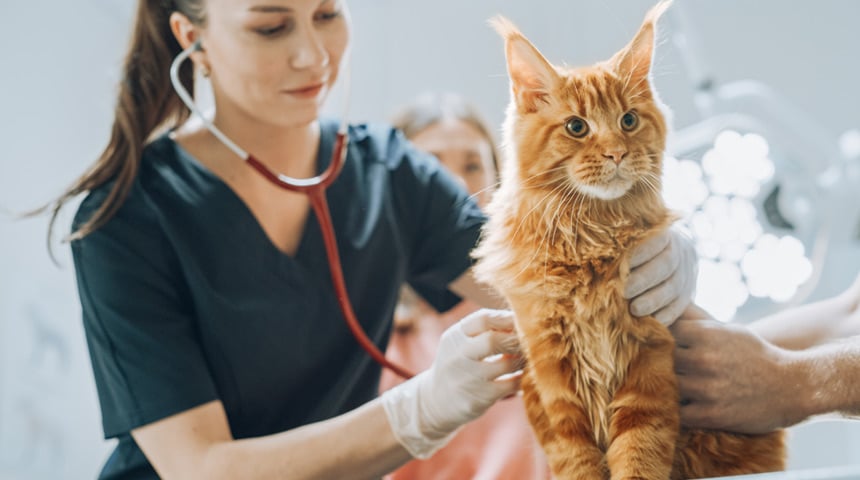
For many cat owners, veterinary visits are gradually sidelined once the initial vaccinations and sterilization are completed. They will only come back to see their veterinarian many years later, when their pet starts to have health issues. But is it a good idea to consult your veterinarian only if your cat presents certain symptoms? Well, no, and here's why these exams help ensure your cat's good health and prevent certain complications.
- Often too late
It's best not to wait until your cat has health issues before consulting your veterinarian. Remember, one year in a cat's life is about the same as four years for a human! Starting at age 7, your cat should be checked every six months and have blood tests taken on a regular basis. These frequent check-ups allow us to diagnose possible problems as they appear and react more quickly. Unfortunately, some diseases have irreversible effects or spread rapidly if not caught early - hence the importance of diagnosing them as soon as possible. By detecting a chronic disease early, it is possible to control it and slow down its progression, extending the life and quality of life for your cat.
-
Cats have their own secret garden
Humans can express their pain, either by screaming, crying, or complaining. Cats, however, are rather secretive about pain and tend to suffer in silence. A thorough physical examination along with several pointed questions about your cat can often uncover the truth, even if your cat has not indicated any discomfort! Whether it is joint pain, so common in cats over 10 years old, a mouth infection that creates chronic pain, or discomfort on palpation that may suggest the onset of a disease, these are small aches and pains that often go unnoticed at home but can be detected during a thorough physical examination.
-
Long-term health is a team effort
A complete examination of your cat allows you to review their physical and psychological health on a yearly basis. This annual exam is also an opportunity for you to learn some tips to help prevent certain medical conditions such as obesity, diabetes and periodontal disease. You can also discover the best ways to provide mental stimulation to your cat, to avoid boredom and the behavioural and urinary problems that come with it. Your veterinarian can also advise you on the specific needs of your cat based on their age and lifestyle. Very common health issues for cats, including obesity, diabetes, osteoarthritis, hyperthyroidism, kidney disease and some cancers can be managed quickly, as long as the disease is caught early. Early treatment always increases the chances of success.
-
Vaccines and dewormers should be repeated regularly
Vaccines administered at an early age are not enough to protect your cat for their entire life. To be effective and protect the animal, vaccines must be repeated annually or every three years, depending on the type of vaccine. All cats, even those who never go outside, should receive at least the basic vaccine, which protects against feline panleukopenia, a serious and often fatal disease. Cats that go outside (even if only on a leash or on the balcony) should be vaccinated against rabies and given appropriate deworming treatment to control several parasites. Because rabies is a deadly disease for animals and humans, protecting your cat from this disease is also a public health consideration. The same is true for certain parasites such as intestinal worms that can be transmitted to humans.
What exactly is a thorough physical examination?
This exam doesn't just involve taking your cat's vital signs (temperature, heart and respiratory rates, gum health). It also involves taking a good look at every area of your cat's body (head, eyes, inside of the mouth, nose, etc.), from their head to the tip of their tail, to make sure that everything is symmetrical and normal. We will look for the presence of suspicious masses, discharges, redness or abnormal swelling. The examination also includes palpating (touching) certain organs (kidneys, bladder, intestines, thyroid gland, lymph nodes, etc.) to make sure they are of normal shape and size, and that they do not hurt. Finally, we listen to their heart and lungs, and we evaluate their condition (fat content, muscle condition, etc.) and their mobility level.

